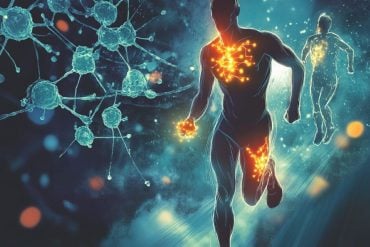Summary: Stress can reduce a woman’s ability to become pregnant during her menstrual cycle, a new study reports.
Source: Wiley
New research in Acta Obstetricia et Gynecologica Scandinavica suggests that stress may affect a woman’s fecundability, or her probability of achieving a pregnancy within a menstrual cycle.
The study assessed allostatic load, which refers to the cumulative “wear and tear” of chronic stress and life events, in 444 women who were trying to become pregnant.
Women with higher allostatic load scores—based on nine indicators such as blood pressure, blood sugar, cortisol, noradrenaline, and cholesterol—were less likely to become pregnant within a year.

For example, the women with an allostatic load score of 5-6 would have a 59% reduction of fecundability compared with those with scores of 0.
“What we found provides a new idea for preconception counseling. But obviously, how to objectively assess the stress is a complex scientific question, and how to intervene and reduce the impact of chronic stress is a burning problem, which are all things we need to study further,” said senior author Bei Wang, PhD, of Southeast University in Jiangsu, China.
About this stress and pregnancy research news
Author: Sara Henning-Stout
Source: Wiley
Contact: Sara Henning-Stout – Wiley
Image: The image is in the public domain
Original Research: Open access.
“Female fecundability is associated with pre-pregnancy allostatic load” by Bei Wang et al. Acta Obstetricia Et Gynecologica Scandinavica
Abstract
Female fecundability is associated with pre-pregnancy allostatic load
Introduction
Allostatic load (AL) is a practical index that reflects multi-system physiological changes which occur in response to chronic psychosocial stress. This study investigated the association between female pre-pregnancy allostatic load and time to pregnancy.
Material and methods
We enrolled 444 women who met the inclusion criteria and were attempting to achieve pregnancy. Their allostatic load scores at baseline were evaluated by nine indicators (systolic blood pressure, diastolic blood pressure, fasting plasma glucose, plasma cortisol, noradrenaline, interleukin-6, hypersensitive C-reactive protein, high density lipoprotein cholesterol and body mass index). The participants were followed up and their pregnancy outcome ascertained 1 year later; we then calculated time-to-pregnancy. Cox models were used to estimate fecundability ratios and their 95% confidence intervals (95% CI) for different allostatic load scores.
Results
The median allostatic load score was 1 with a range of 0–6. The females were divided into four groups according to allostatic load score: group A (allostatic load = 0, 150/444, 33.8%), group B (allostatic load = 1–2, 156/444, 35.1%), group C (allostatic load = 3–4, 100/444, 22.5%) and group D (allostatic load = 5–6, 38/444, 8.6%). The cumulative pregnancy rate over 12 months for the four groups (A–D) was 55.4%, 44.5%, 50.9% and 26.9%, respectively (log-rank test, p = 0.042). After adjusting for potential confounding factors, group D showed a 59% reduction of fecundability compared with group A (fecundability ratio = 0.41, 95% CI 0.21–0.83).
Conclusions
Women with a higher allostatic load score may have lower fecundability. Our findings suggest that the assessment of allostatic load during pre-conception consultation would be highly prudent.






